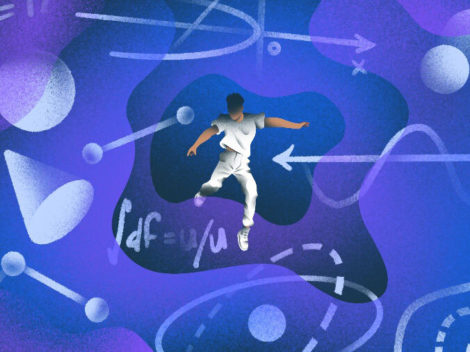All work and little play, plus unprecedented distress over the last year, has taken a huge toll on employee mental health, and translated to a Herculean burden for HR teams charged with looking after dispersed teams.
Subscribe to the Crunchbase Daily
Outdated processes based on face-to-face interactions have left HR groping about in the dark, but also more open to trying unconventional (read, “innovative”) approaches to the problem.
AI-powered tools are ready to change HR, offering an extra set of eyes and ears for HR departments managing remote teams. Cutting-edge sentiment analysis platforms – already in use in a myriad of industries – use AI to mine the context of internal company communications to extract information on things like engagement and mood levels. Here’s a look at how these tools will revolutionize HR practices through a safe, ethical way of gauging satisfaction, engagement and well-being.
Support employee well-being, near or far
Unable to lean on traditional means of assessing employee well-being like absenteeism, meeting participation, employee surveys, and email feedback campaigns, HR teams can now turn to AI-powered sentiment analysis tools that synthesize information and deduce what people are feeling, when they are feeling it.
Businesses have previously used sentiment analysis to get a sense of how their target audience feels towards their brand by analyzing social media streams. Recent advances in the algorithms mean that this technology can now be put to use in the workplace, allowing HR managers to understand the overall sentiments of their workforce. These AI tools integrate with workplace communication platforms such as Slack, Microsoft Teams, and Gmail and derive insights on employee mood, stress levels, friction between coworkers, and potential for burnout.

Importantly, a sentiment analysis platform like the one described does not display anything related to the content of people’s conversations and is used only with the consent of everyone in the organization. The data of the employee communications pass through a neural network and only the semantic interpretation is presented to managers, using analytics graphs.
When used over time, AI can help HR professionals understand the evolution of employees’ feelings and depict trends over days, weeks, months, and even years. For HR, this solution measures something subjective (emotion) in an objective way (long-term individual KPIs).
Armed with this information and an understanding of when and why people’s moods are affected, HR managers can work to create the right conditions to support mental health and reduce stress.
Reduce turnover by measuring engagement
Reduced levels of employee engagement not only impact productivity and work quality, but they also often lead to team members leaving the company. With a recent report estimating that it costs an organization 33 percent of a worker’s salary to hire their replacement, HR professionals need the tools which allow them to swiftly act to resolve issues before they take root.
This means being proactive to re-engage team members when they appear to be “checked out.” For example, metrics such as negative sentiment in Slack messages could be indicators of a lack of morale, allowing managers to intervene with re-engagement strategies such as a new project or training opportunities.
One impressive use case of this in action comes from IBM, which uses AI within its HR department to identify employees at risk of quitting and steps in with suggestions around new skills training, education, job promotions and raises. The company’s “predictive attrition program” can predict which employees will leave a job with 95 percent accuracy.
Create an open and communicative culture
The top predictor of workplace satisfaction isn’t pay: it’s the organization’s culture and values. And when it comes to preserving and building company culture, HR is now playing a more vital role than ever. HR departments are tasked with relaying information between different levels of staff and communicating employees’ perspectives of company leaders, the company’s goals, and what the organization values.
Once more, AI tools offer invaluable assistance. With high-level data on things like overall employee communication and friction levels between teams, HR managers can identify where and when an open-minded and collaborative culture is at risk of deteriorating.
By monitoring interactions between different teams collaborating on projects, AI-powered tools can provide a tangible way to measure your company culture. When cracks appear, leaders can take unifying action by offering group training on effective communication and helping them clarify expectations.
In the end, the concept of company culture, just like the very notion of the office, is in flux – with employee well-being hanging in the balance. In a moment where human connection is lacking, the need for a communicative, supportive, and open professional environment has never been greater. AI can help you get there.
Alejandro Martínez Agenjo is the CEO and co-founder of Erudit AI. He currently holds 12 patents and IP rights related to people management technology. You can follow him on Twitter at @MartinezAgenjo.
Illustration: Dom Guzman

Stay up to date with recent funding rounds, acquisitions, and more with the Crunchbase Daily.



![Illustration of a blue unicorn with a green money background. [Dom Guzman]](https://news.crunchbase.com/wp-content/uploads/Unicorn_Money_v3-470x352.jpg)
![Clean tech - Robot sorting recycling. [Dom Guzman]](https://news.crunchbase.com/wp-content/uploads/Clean_Tech-1-470x352.jpg)
![Illustration of woman building charts. [Dom Guzman]](https://news.crunchbase.com/wp-content/uploads/charts-300x168.jpg)




67.1K Followers